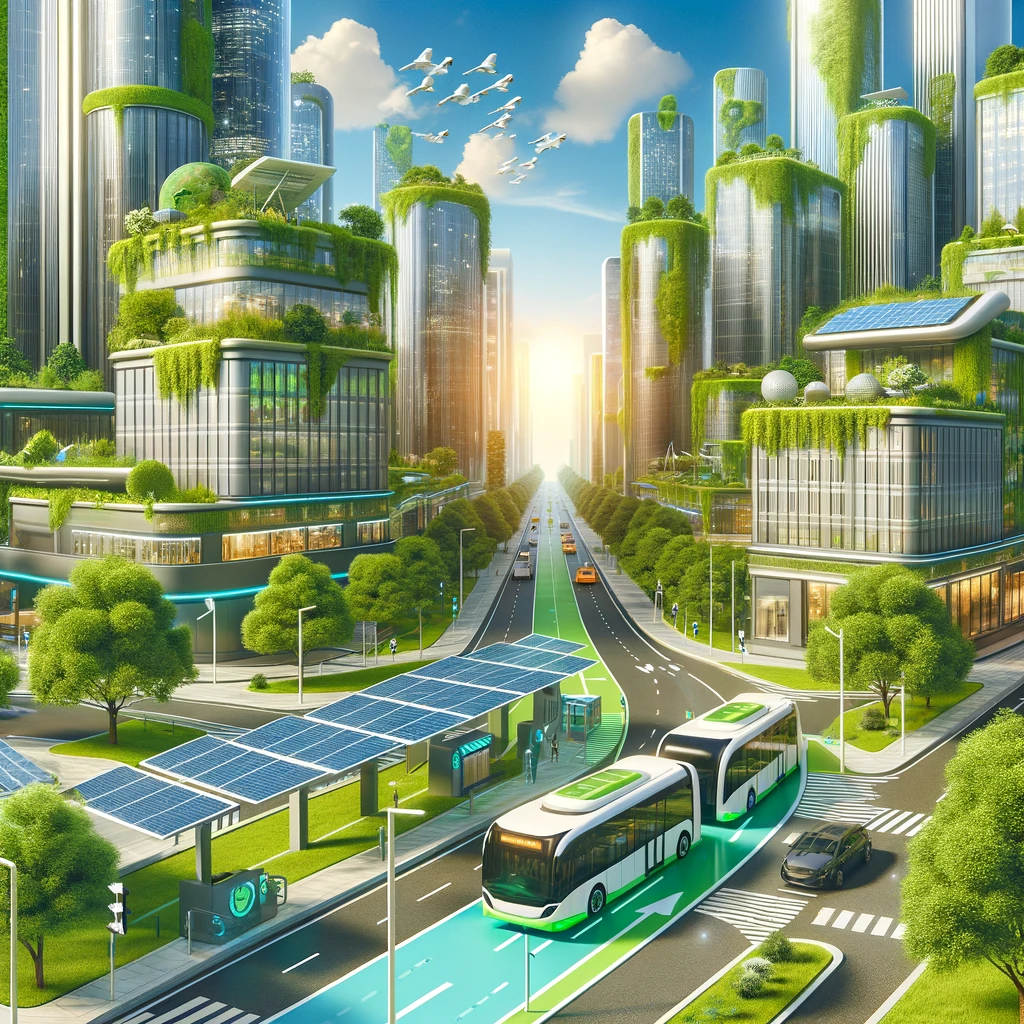Introduction
In the era of heightened environmental awareness, the future of public transport is undergoing a significant transformation. The integration of green technology and sustainable practices is not just a trend but a necessity, paving the way for eco-friendly urban mobility solutions. This article explores how renewable energy, technological advancements, smart cities, and electric vehicles are revolutionizing public transport, contributing to a greener and more sustainable future.
Renewable Energy and Public Transport
Harnessing Clean Energy for Sustainable Mobility
The adoption of renewable energy sources in public transportation systems marks a pivotal shift towards sustainable urban travel. Solar and wind energy, in particular, are playing a crucial role in powering electric buses and trains, significantly reducing carbon emissions and fostering cleaner air.
Innovations in Solar-Powered Transportation
Innovations in solar technology have led to the development of solar-powered buses and trams, demonstrating a practical application of clean energy in daily commuting. These advancements not only exemplify environmental responsibility but also signify a step towards energy independence in urban transport.
The Impact of Renewable Energy on Public Transport Efficiency
Renewable energy not only contributes to a cleaner environment but also enhances the efficiency of public transport systems. By reducing reliance on fossil fuels, cities can ensure more reliable and cost-effective transportation solutions, benefiting both the environment and commuters.
Green Technology in Urban Mobility
Smart Technologies for Enhanced Commuter Experience
The integration of green technology in public transport extends beyond vehicles. Smart technologies, such as real-time tracking systems and eco-friendly materials in construction, are elevating the commuter experience while minimizing environmental impact.
Sustainable Infrastructure for Future-Ready Cities
The development of sustainable transport infrastructure, including green bus shelters and eco-friendly stations, plays a crucial role in promoting the use of public transport while contributing to the aesthetic and environmental wellness of urban spaces.
Reducing Carbon Footprint through Technological Integration
By integrating advanced technologies in public transport systems, cities can significantly reduce their carbon footprint. This not only aligns with global sustainability goals but also sets a precedent for future urban planning and development.
The Role of Electric Vehicles in Urban Transport
Electric Buses: Leading the Charge in Green Commuting
Electric buses have emerged as frontrunners in the quest for sustainable urban mobility. With zero tailpipe emissions, these vehicles are pivotal in transforming cityscapes into cleaner and quieter spaces.
Challenges and Opportunities in Electric Vehicle Adoption
While electric vehicles offer a cleaner alternative to traditional transport, challenges such as charging infrastructure and battery technology remain. Addressing these challenges presents opportunities for innovation and growth in the sector.
The Economic and Environmental Benefits of Electric Public Transport
The shift to electric vehicles in public transport not only has environmental benefits but also offers economic advantages. Reduced operating costs and lower maintenance expenses make electric buses a financially viable option for cities.
Smart Cities and Sustainable Public Transport
Integrating Mobility Solutions in Smart Urban Planning
Smart cities are at the forefront of integrating sustainable mobility solutions into urban planning. By prioritizing public transport in city layouts, urban planners can create more accessible and efficient cities.
Data Analytics and AI in Enhancing Transport Systems
The use of data analytics and artificial intelligence in public transport helps in optimizing routes, reducing wait times, and improving overall service quality. This technology-driven approach is key to developing smarter, more responsive transport networks.
Building a Connected Urban Ecosystem
The future of public transport in smart cities lies in creating a connected ecosystem where different modes of transport seamlessly integrate. This holistic approach fosters a more inclusive and accessible urban environment.
Conclusion
The future of public transport is undeniably intertwined with eco-friendly urban mobility solutions. As we step into a new era of urban development, the focus on renewable energy, green technology, electric vehicles, and smart cities is not just about innovation but about building a sustainable legacy for future generations. Embracing these changes is essential for creating an efficient, accessible, and environmentally responsible public transport system that meets the demands of modern urban life.




